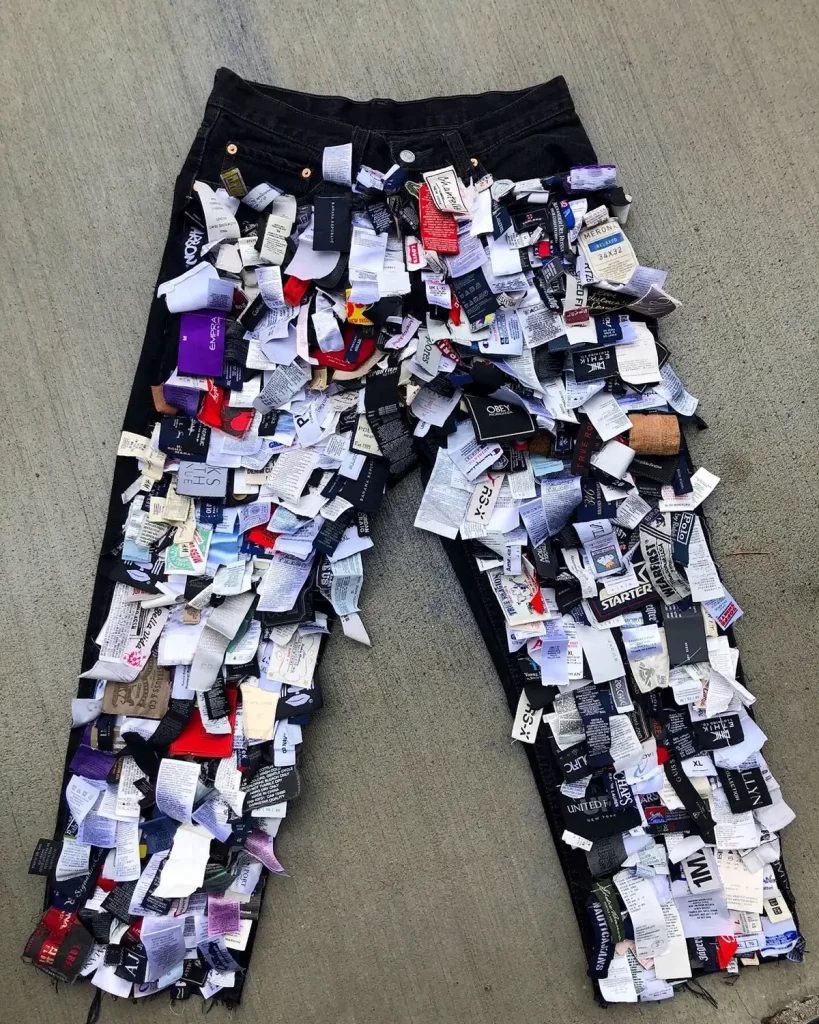There has been a growing awareness about the effects of chemicals, used in fashion industries to produce garments, on our planet. Consequently, sustainable trends have emerged as a response to this issue. Nowadays, upcycling fashion as a sustainable form has become popular worldwide. Upcycling is a sustainable production form in which the life of waste materials or tattered objects is prolonged by redesigning them into new products. This reusing, reshaping, repurposing, or overall transformation involves a special biographical story that can also act as an advertisement and get consumers interested.
Unveiling the Influence of Past Identity
All repurposed products including those that have undergone upcycling and recycling, go through this biographical transformation. This gives them two identities: a past identity derived from the original product, and a present identity that has given the current product a different form and functionality. These days the strategy of upcycling fashion brands to heighten their volume of sales is to make the past identity of upcycled products noteworthy. This past identity noteworthiness can draw customers’ attention to the old materials and their specific story. Studies show that past identity noteworthiness increases the demand for repurposed products.
Upcycled products make consumers aware that they are not the first person to utilize the product. It is still unclear whether the demand suffers or benefits from the strategy of past identity noteworthiness on the whole as many consumers are reluctant to opt for secondhand products. Elvis & Kresse, Freitag, and Upcycling Deluxe are shining examples of brands that draw attention to the recycled nature of their products but they do not disclose their products’ specific past identities.
Recent findings show that simple cues are sufficient for the story-prone nature of the human mind to develop the whole story for themselves. Meaning that storytelling doesn’t require explicit details.
How Can Past Identity Noteworthiness Increase Demand for Upcycled Products?
As mentioned earlier, all repurposed products have a biographical story attached to them from before their transformation, and it is not necessary to tell the story in detail to draw customers’ attention as narrative thinking is an inherent part of human thinking structure, meaning that we all appreciate a good story. Stories related to transformation or metamorphosis which involve a change in identity can therefore be an integral part of advertising for upcycled items of clothing. The fact is transformational stories are particularly powerful to induce narrative structured thoughts. Chronology – the temporal sequence or episodes of events – and causality – the causal connections or relationships between elements of the story– enable narrative thinking. Storytelling is a common marketing practice due to its ability to demonstrate, communicate, persuade, and finally fuel demand. It has been shown that objects with a story have the power to make individuals feel special about themselves and the product they purchase. People’s narrative thinking helps stories be self-inferred which can result in special and personal meanings.
Last Word
As a result, a products’ metamorphosis plays a key role in boosting the demand for upcycled and recycled products. This transformation of a past identity into a new one appears to suffice for the narrative structured thinking to attach personal meanings to an object. The biographical story or past identity noteworthiness draws attention to the products’ metamorphosis which can result in inducing a sense of specialness in customers. This specialness can potentially boost the demand for repurposed products.





